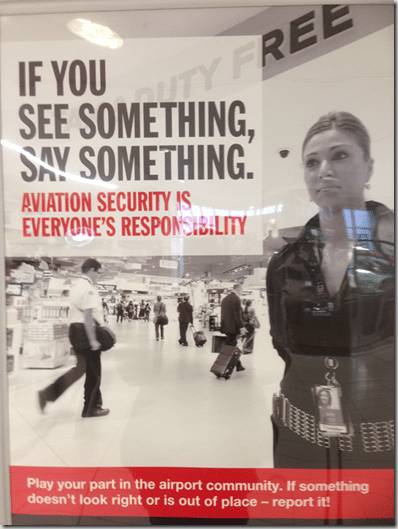Originally posted on August 21, 2014 @ 1:33 PM
Its all About Behaviours
I’d like a dollar for every time I get asked if do programs on ‘behaviours’. Oh, doesn’t safety love behaviours. I often get asked this question by people who want to control the behaviour of others. It is amazing how attractive behaviourism is to the safety industry. ‘Forget this psychology stuff’, they say, ‘I need measurable behaviours’. This is usually followed by some pithy saying like: ‘you can’t manage what you can’t measure’. How strange, because the most important things in life that we value cannot be measured and, if you seek to measure them you ruin the quality of those values. Just imagine if you tried to quantify the love for your partner or children? Just the suggestion of the question would ruin the nature of the love one espouses.
When I get asked to join the quest for ‘behaviours’ I usually state that this is not what I do and that ends the conversation, no work there. This is a mutual separation; I am not interested in the myopic focus on behaviours, it has a troubling trajectory. There’s much more to being human than behaviours, much more to understanding risk than behaviours and much more to human judgment and decision making than behavioural outcomes.
When you catch a plane there are often signs about drawing your attention to focus and report ‘unusual’ behaviours. Interesting, I wonder how these are identified? By what criteria are these identified? Look at this poster above, I took this yesterday. The caption is: ‘if something doesn’t look right’, what? How would anyone know what looks wrong? Maybe someone who looks like Osama Bin Laden? Maybe people with eyes close together? Maybe people who fidget or avoid eye contact? Is it someone looking down? Someone walking fast? Is it someone who is nervous? Maybe people who hold on to their backpack in an unusual way? What a crazy quest to throw at the public. Most experts themselves have no idea what constitutes ‘unusual’ behaviours till after the event with hindsight and CCTV footage. Perhaps that’s why they throw this responsibility in spin on to the public.
We can all be brilliant behaviourists with 100% hindsight. We can all rebuke others for a lack of ‘common sense’ when we see the CCTV footage. Why can’t they see that, they must be dumb, blind freddy can see that, it’s common sense. A good read of Duncan Watts book ‘Everything is Obvious Once you Know the Answer, How Common Sense Fails Us’ will put an end to the myth of common sense. Really, how come the chasers walked in so easily on APEC (http://youtu.be/TdnAaQ0n5-8) with so many indicators that they were fake. Not one expert picked up the clues regardless of spending $150 mill on security. How easily the chasers fooled security staff on the Sydney Harbour Bridge simply with dress (http://www.youtube.com/watch?v=McB9tsabPn0). If you know how to interpret behavior as suspicious, good luck to you, the rest of us don’t know.
Behaviours are not objective but interpreted. Behaviours and behavioural indicators are subjective. We could be observing an aberration of behaviour. We often don’t ‘feel’ quite ourselves, We may be ill, stressed, distressed, eustressed, de-stressed, anxious, depressed, distracted, preoccupied or upset. There are hundreds of reasons why our behaviours are hard to read, understand and interpret. To make hard and fast judgments on the interpretation of behaviours is fraught with problems. The idea that all behaviours are both objective and measurable is nonsense. Without a relationship with someone, deep understanding and familiarity, most judgment about behaviours is likely to be wrong. Even after 30 years of marriage one learns to be wise in discerning and interpreting behaviours.
Of course behaviours can be faked, the sociopath and psychopath are experts at this. One can think one knows another only to be surprised much later when trust gets decimated. Behaviours are not a reliable measure. This quest for behaviours is a delusional fixation on the measurable, especially in the world of safety and risk. Behavioural based safety especially is a mythical preoccupation that images others can be controlled and thereby diminishes the importance of ownership and learning. Humans are not just the sum of inputs and outputs. What a strange and delusional anthropology that imagines humans are like machines and computers. Such a view doesn’t explain human motivation at all and certainly doesn’t explain the diversity of human perception.
Observation without conversation is a guessing game. It is at best a speculation that says more about the observer that the subject of observation. I see so much in the safety world about behaviour observations checklists and they make me laugh. To imagine one could get any value from a checklist of observing behaviours is nonsense. Observation without skilled conversation, open questions, unconditional positive regard and listening, is meaningless. So lets stop talking about behaviours and start talking about relationships. Lets not spy on people and parade the nonsense of speculative interpretations as truth. Lets stop talking about behaviours and start talking about people.




Do you have any thoughts? Please share them below